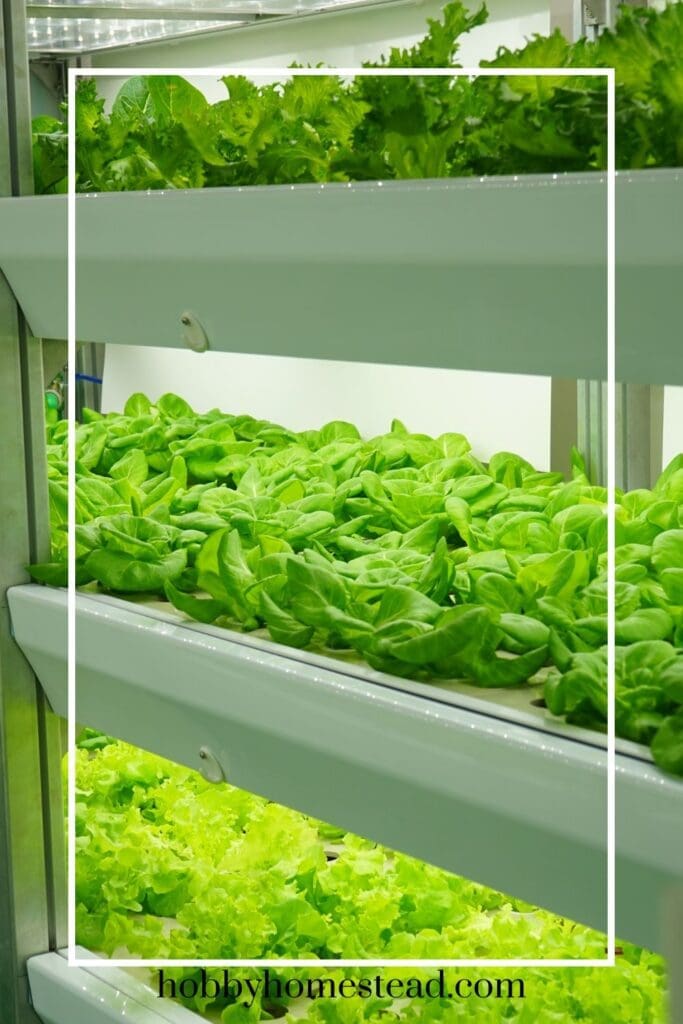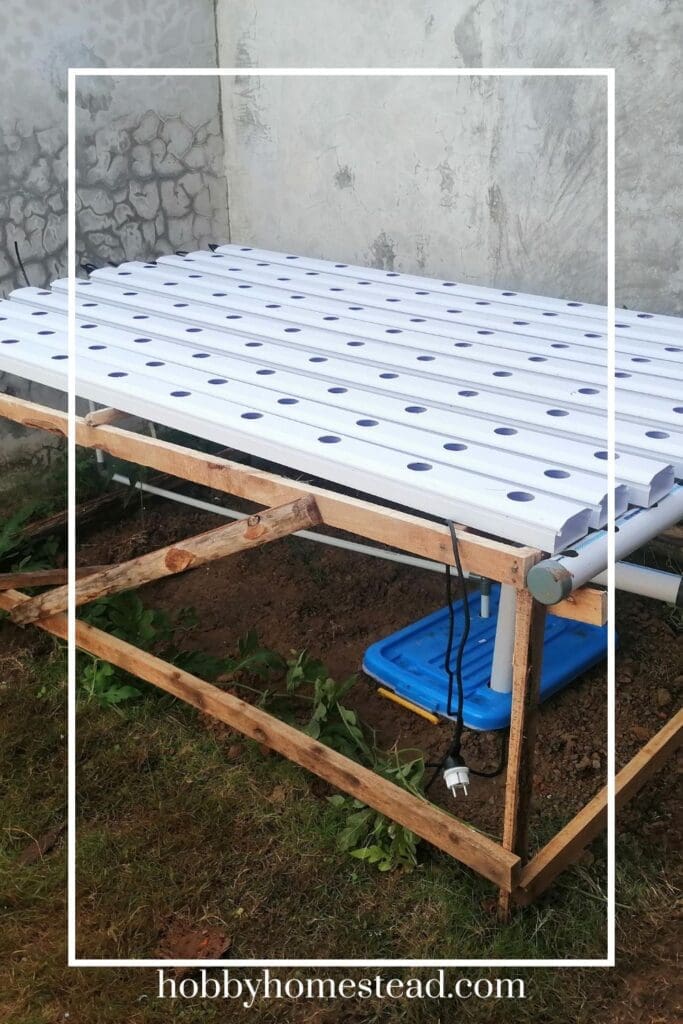Learn how easy it is to grow crisp lettuce hydroponically. Growing your own lettuce at home doesn’t require a big garden or perfect weather. In fact, learning how to grow hydroponic lettuce is one of the easiest and most rewarding ways to enjoy fresh, crisp greens year-round. Whether you’re short on space, tired of grocery store produce, or just want to try something new, hydroponics makes it possible to harvest lettuce right from your countertop or basement.
Many home gardeners are turning to hydroponic lettuce indoors as a sustainable, mess-free alternative to traditional soil gardening. With the right setup and a little know-how, you can grow a variety of leafy greens in a controlled environment that uses less water and space. It’s a great way to ensure your family always has access to nutritious, homegrown lettuce—no matter the season.
In this guide, we’ll walk through everything you need to know to get started: from choosing the best lettuce varieties and lighting setup, to maintaining healthy root systems and harvesting your first crop. Let’s dig in!

If you’ve ever wished for fresh lettuce at your fingertips year-round, the good news is—you can! Growing hydroponic lettuce indoors is an excellent option for home gardeners, urban dwellers, and anyone looking for a cleaner, faster way to enjoy leafy greens. Hydroponic gardening takes the mess out of traditional soil growing and offers higher yields with less water and space.
Let’s walk through everything you need to know to start your very own hydroponic lettuce garden.
Why Choose Hydroponic Lettuce?
Hydroponic lettuce is one of the most popular hydroponic crops for a reason. It’s the easiest vegetable to grow in a hydroponic system, perfect for beginners and seasoned hydroponic growers alike. With rapid growth, no soil mess, and fresh produce right in your kitchen or grow room, it’s a great choice for anyone.
Choosing Lettuce Varieties
Not all lettuces are the same, and in hydroponic systems, some perform better than others. Popular varieties of lettuce for hydroponic setups include:
Butterhead Lettuce (Like Bibb or Boston)
Butterhead lettuce, including popular varieties like Bibb and Boston, is prized for its soft, tender texture and mild, slightly sweet flavor. These lettuces form compact heads with loosely layered leaves that feel buttery to the touch—hence the name. Butterhead varieties are excellent for hydroponic systems because they grow relatively quickly and don’t require a lot of space. Their delicate leaves make them perfect for salads, sandwiches, or as a bed for grilled dishes.
Romaine Lettuce
Known for its crisp texture and slightly bitter, robust flavor. It forms tall, upright heads with sturdy leaves that hold up well in salads, especially classic dishes like Caesar salad. Romaine is a cool-season crop that thrives in hydroponic environments, producing higher yields thanks to its upright growth habit. Its crunchy leaves are a favorite for wraps and sandwiches, making it a versatile choice for fresh produce lovers.
Oak Leaf Lettuce
This one stands out with its loose-leaf structure and deeply lobed, decorative leaves that resemble oak tree foliage. It’s a beautiful addition to any salad mix, offering a mild flavor and tender texture. Oak leaf lettuce grows well in hydroponic systems, especially for gardeners who want leafy greens that are both functional and visually appealing. Because it’s a loose-leaf variety, you can harvest outer leaves continuously, allowing the plant to keep growing and providing a steady supply of fresh greens.
Red Leaf Lettuce
It brings vibrant color and tenderness to your salad bowl. Its ruffled, loose leaves range in color from deep red to burgundy, adding visual appeal alongside a delicate, mild taste. Like oak leaf lettuce, red leaf lettuce is a loose-leaf variety, which means you can pick the outer leaves and let the inner leaves grow for multiple harvests. It thrives in hydroponic conditions and is a popular choice for hydroponic growers wanting both flavor and flair in their fresh produce.
Bibb Lettuce
It’s tender and easy to harvest. You can harvest the whole head at once or carefully pick the outer leaves, allowing the center to keep growing in hydroponic systems. It’s a great choice for hydroponic setups because it’s compact, grows quickly, and thrives in cool, moist environments.
Loose-leaf varieties. fast growing and ideal for harvesting outer leaves as needed
Different lettuce types offer varieties of lettuce flavors, colors, and textures. Try mixing several types for a continuous and diverse harvest.

Hydroponic Lettuce Setup Basics
To start, you’ll need a simple hydroponic setup that supports optimal growth. Some popular methods include:
- Deep Water Culture (DWC) – roots float in a nutrient-rich solution
- Nutrient Film Technique (NFT) – a thin layer of nutrients runs past the roots
- Hydroponic towers – vertical systems that save space
- Small containers with net pots – easy to manage for beginners
Make sure your hydroponics system includes a water pump and air pump to keep the water oxygenated and moving. A soilless growing medium like coco coir, clay pebbles, or rock wool provides good drainage and healthy root growth.
Lighting Requirements for Indoor Lettuce
Lettuce is a cool-season crop, so it doesn’t need as much light as tomatoes or peppers, but it still needs enough light for healthy growth.
- Aim for 10 to 14 hours of light daily using grow lights if you lack natural light.
- Keep the air temperature between 60–70°F for best results.
- A controlled environment with consistent hydroponic conditions will ensure faster growth rates and healthy lettuce plants.
Planting Lettuce Seeds
Start your journey with quality lettuce seeds. Germinate them in a moist medium like rock wool or coconut fiber for a strong start. Once the lettuce seedlings develop a healthy root system, transfer them to your hydroponic setup.
Maintain a pH range of 5.5 to 6.5 and keep an eye on electrical conductivity (EC range) for nutrient balance. Ideal nutrient solution temperature is around 65–70°F.
How to Care for Your Hydroponic Lettuce
- Monitor your nutrient-rich solution to ensure proper nitrogen levels and balanced nutrition.
- Trim outer leaves regularly to allow inner leaves to keep growing.
- Watch the water level and top off with fresh water as needed.
- If you notice tip burn, that’s a common issue—often caused by too much light or incorrect pH.
Whether you’re growing the whole head or harvesting leaf by leaf, you’ll enjoy crisp, tasty lettuce in just 4–6 weeks.
Can You Regrow Hydroponic Lettuce?
Yes! You can regrow lettuce in hydroponics from the base of the plant, though it’s more effective to start new lettuce seeds for consistent results. Some growers place the cut base of a store-bought lettuce type in a hydroponic environment to regrow fresh lettuce—a great way to reduce waste and experiment.
Hydroponic Lettuce: Space-Saving and Sustainable
Hydroponic lettuce can grow just about anywhere—on a countertop, shelf, or in a hydroponic greenhouse. It’s an excellent choice for tight grow spaces and for those looking to reduce grocery store runs. Because hydroponic farming uses less water, it’s also more sustainable than soil-grown lettuce.
Even in a little space, you can grow enough lettuce to keep your family supplied with fresh salads all year long.

What is the Easiest Way for Beginners to Start with Hyrdroponics?
🌱 Why Deep Water Culture (DWC) Is Ideal for Beginners
1. Simple Setup:
DWC systems are easy to build and require only a few components: a reservoir, net pots, an air pump, and a nutrient solution. Many DIY systems can be made from plastic totes or buckets with minimal cost.
2. Low Maintenance:
Once set up, the system mostly runs itself. There are fewer moving parts compared to systems like Nutrient Film Technique (NFT) or aeroponics, which require precise water flow or misting.
3. Great for Leafy Greens:
DWC is perfect for lettuce varieties, spinach, kale, and other cool-season crops that grow quickly and don’t need extensive root space.
4. Fast Growth:
Roots are submerged directly in the nutrient-rich solution, so the plant has constant access to water and nutrients—leading to faster growth rates and higher yields than soil-grown lettuce.
5. Easy to Monitor:
You can easily check pH range, electrical conductivity, and water level in a DWC setup. These factors are key for healthy growing conditions, especially in a controlled environment like indoors.
Bonus Tip:
For beginners, it’s also a good idea to start with loose-leaf varieties of lettuce. They’re more forgiving and allow for multiple harvests by trimming the outer leaves, letting the plant keep growing.
🧪 Maintaining Healthy Root Systems in Hydroponic Lettuce
The root system plays a crucial role in hydroponic lettuce production. Since the plants rely entirely on the nutrient-rich solution, it’s essential to keep roots healthy and free of stress. Clean, white roots are a sign of healthy growth, while brown, slimy, or foul-smelling roots may indicate root rot, a common issue in warm, poorly oxygenated water.
Here are a few key steps to ensure your lettuce roots thrive:
- Keep water oxygenated using a reliable air pump and air stones.
- Maintain the water temperature between 65°F and 70°F for optimal root growth.
- Check the water level regularly to ensure roots are submerged but not drowning.
- Monitor pH range (5.5–6.5) and EC range for balanced nutrient uptake.
- Use clean, high-quality hydroponic solution and replace it every 1–2 weeks.
- Avoid letting light reach the roots—use light-blocking containers to prevent algae.
- Consider using beneficial bacteria or root inoculants to promote resilience.
Healthy roots help the entire plant absorb nutrients efficiently, leading to faster growth rates, higher yields, and crisp, vibrant fresh lettuce.
Final Thoughts
Whether you’re using a compact NFT system, a countertop tower, or DIY tubs with net pots, growing hydroponic lettuce indoors is an effective way to enjoy fresh produce daily. It’s one of the best hydroponic plants for both beginners and experienced growers.
With a bit of planning and the right hydroponic solution, you’ll enjoy a bountiful harvest of leafy greens that rival anything you’d find at the grocery store. There’s good reason so many people are turning to hydroponic gardening for their lettuce production—it’s clean, quick, and delicious!


